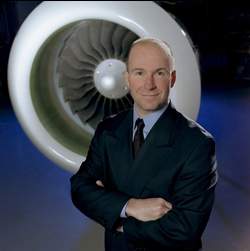Leeham News and Analysis
There's more to real news than a news release.
Playing number games with the A380
Feb. 15, 2015: Orders for the Airbus A380 have been slow, almost glacial, since the program was launched in 2000. Despite a 20-year forecast then and every year since by Airbus that suggests there is a need for 1,200-1,700 Very Large Aircraft (including freighters), sales of the A380 and Boeing’s 747-400/8 have never reached a point that support the forecast.
Airbus’ latest forecast now is for around 1,500 VLAs, including freighters.
Slow sales hang over the prospect of developing an A380neo. We concluded last year that Airbus had to proceed with the neo in order to spur sales. The commercial viability is a matter of great debate, but Airbus Commercial CEO Fabrice Bregier said last month Airbus will produce a neo, and even stretch the airplane.
Aviation consultant Richard Aboulafia, a critic of the A380 from the get-go, thinks Airbus would be nuts to launch a neo. At the Pacific Northwest Aerospace Alliance conference last week in Lynnwood (WA), in the heart of Boeing country, Aboulafia renewed his decades-long criticism of the airplane.
PNAA Conference: Airbus says A320 cancellations not as bad as numbers suggest
Feb. 12, 2015: Simon Pickup, Strategic Marketing Director, Airbus, took issue (no surprise there) with Boeing’s Randy Tinseth, VP Marketing, at the Pacific Northwest Aerospace Alliance conference today in Lynnwood (WA), and Tinseth’s barb that Airbus had a record year of 340 cancellations.
One hundred fifty of the A320ceo cancellations were swaps to A320neo orders, so the numbers weren’t as bad as numbers appeared, Pickup says. Read more
Boeing 757 MAX: why its operating economics does not work
By Bjorn Fehrm
Introduction
Feb 12, 2015: In a series of articles during the autumn we covered the replacement scenarios for Boeing’s 757-200 when used for long haul passenger operations. The series also included an interview with Boeing’s head of new airplane studies, Kourosh Hadi, director of product development at Boeing where he outlined what Boeing studied and why.
This week The Wall Street Journal published an article portraying that Boeing seriously considered launching a re-engined 757 as a response to Airbus A321LR. Boeing has since vehemently denied the story and we have given the reasons why it does not make sense for Boeing.
As a complement we show the operational economical analysis that we did at the time of our 757 articles, now updated to the exact modifications suggested by The WSJ, a new engine and new winglets paired with modern avionics.
PNAA Conference: Boeing’s Tinseth dismisses Aboulafia forecast of Airbus A320 dominance; firm ” no” on 757RE
Quotations are paraphrased.
Feb. 11, 2015: I don’t see a 60% market share for our competition (Airbus, single-aisle airplanes), says Randy Tinseth, VP Marketing, Boeing Commercial Airplanes, in his presentation today before the Pacific Northwest Aerospace Alliance in Lynnwood (WA).
Tinseth instead points to the 50/50 deliveries of the A320 v the 737 in 2014.
He was referring to Richard Aboulafia’s prediction that Airbus will have a 60% single-aisle market share through 2024.




 , it was announced today
, it was announced today